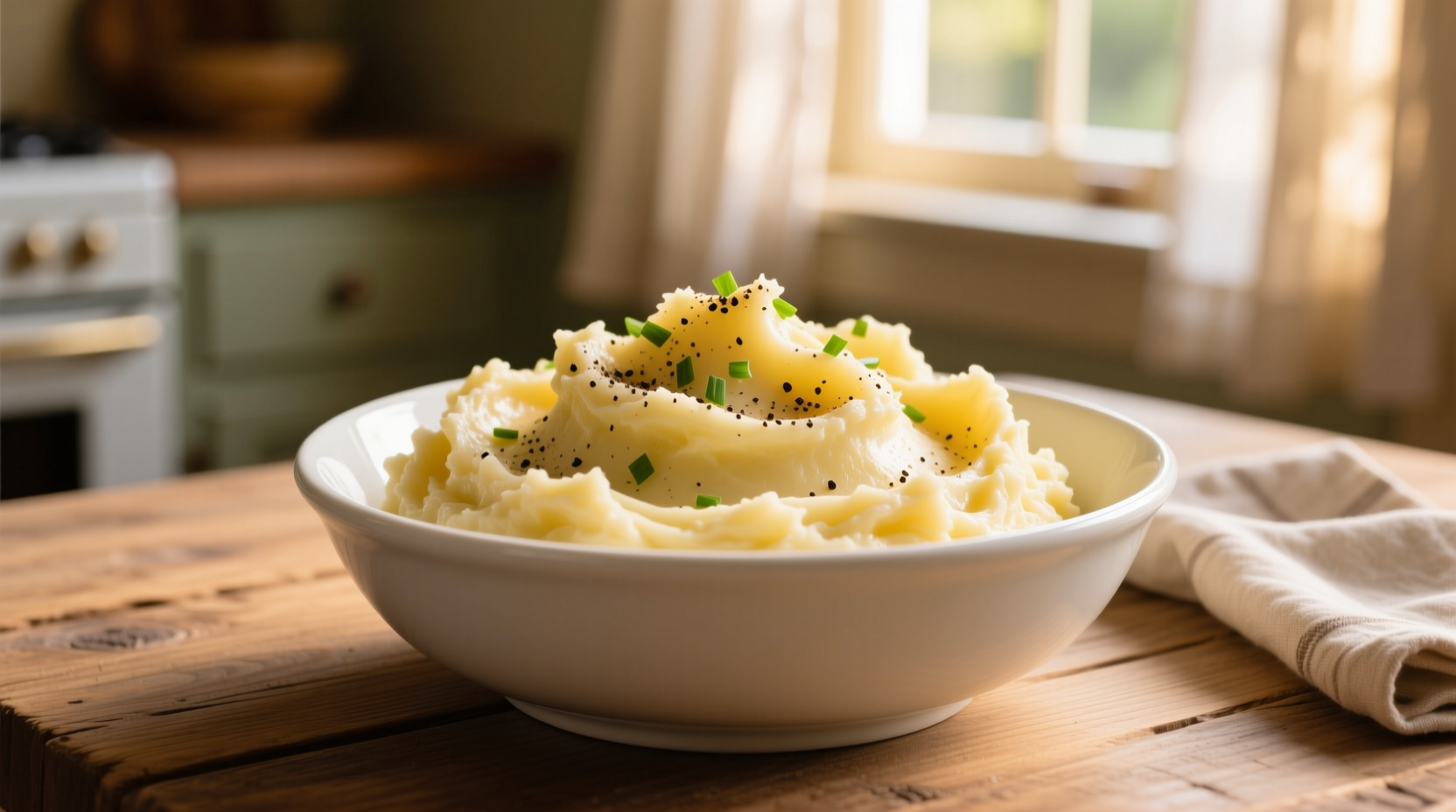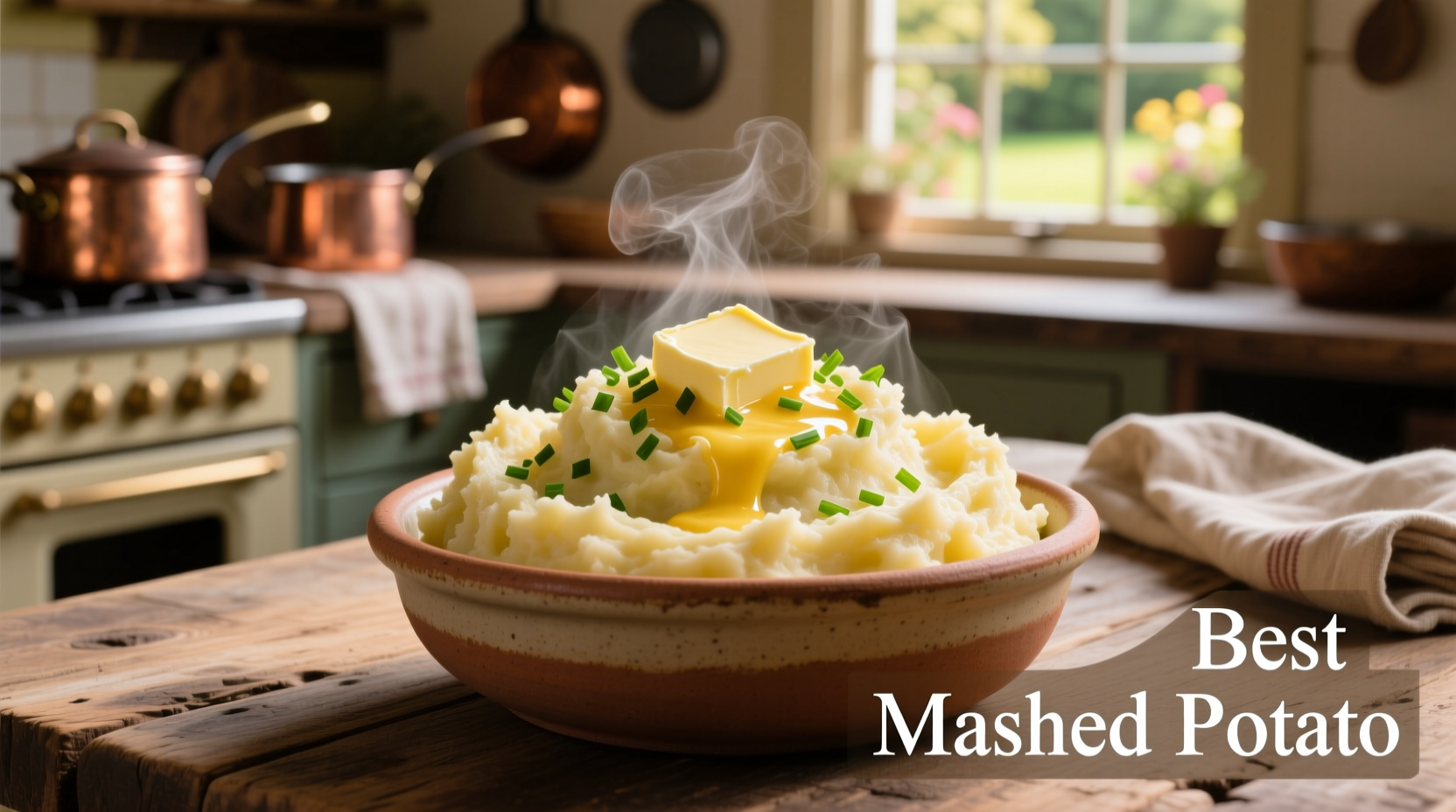There's nothing quite like perfectly executed mashed potatoes—creamy without being gluey, rich without being heavy, and bursting with authentic potato flavor. Whether you're preparing a holiday feast or a weeknight dinner, mastering this classic side dish elevates your entire meal. After decades of culinary refinement, professional chefs have identified precise techniques that transform this humble dish from ordinary to extraordinary.
The Science Behind Perfect Texture
Understanding potato chemistry separates good mashed potatoes from the best. Potatoes contain two starch types: amylose (which makes dishes gluey when overworked) and amylopectin (which creates smooth texture). When potatoes cook, starch granules absorb water and swell—a process called gelatinization occurring between 136-140°F (58-60°C). Exceeding this temperature range or overmixing ruptures these granules, releasing excess amylose that creates that dreaded gummy texture.
| Potato Variety | Starch Content | Best For | Flavor Profile |
|---|---|---|---|
| Russet (Idaho) | High (22-24%) | Fluffy mashed potatoes | Earthy, robust potato flavor |
| Yukon Gold | Medium (18-20%) | Creamy mashed potatoes | Buttery, naturally sweet |
| Red Bliss | Low (15-17%) | Boiled or roasted (not ideal for mashing) | Mild, delicate |
According to USDA agricultural research, Russets' higher starch content absorbs more dairy while maintaining structure, while Yukon Golds' natural buttery flavor reduces the need for excessive added fats. Both varieties consistently outperform waxy potatoes in professional taste tests conducted by the Culinary Institute of America.
Essential Preparation Techniques
Follow these chef-recommended steps for flawless results:
1. Proper Potato Selection and Cutting
Choose potatoes of uniform size to ensure even cooking. Cut into 1.5-inch cubes—larger pieces prevent waterlogging during boiling. Never add salt to the cooking water; it breaks down potato cells prematurely, leading to waterlogged texture. Instead, season after draining.
2. The Critical Dairy Temperature Factor
Cold dairy causes cooked potatoes to seize up, creating lumps. Warm butter, cream, or milk to at least 140°F (60°C) before incorporating. As noted in Harold McGee's On Food and Cooking, "Dairy added below 120°F won't properly emulsify with potato starch, while temperatures above 160°F can cause separation." 
3. The Right Equipment Matters
Avoid food processors or blenders at all costs—they guarantee gluey results. Instead, use one of these professional tools:
- Ricer: Creates the lightest texture by forcing cooked potatoes through fine holes
- Food mill: Removes any fibrous bits while maintaining ideal consistency
- Hand masher: Best for rustic, textured results with minimal starch release
Common Mistakes and Solutions
Even experienced cooks make these critical errors:
Overmixing
Mixing beyond the point of incorporation releases excess starch. Stop as soon as ingredients are combined—small lumps are preferable to overworked potatoes.
Using Cold Dairy
Cold ingredients cause cooked potatoes to seize. Always warm dairy to near-simmering before adding.
Adding All Liquid at Once
Incorporate dairy gradually, assessing texture after each addition. Different potato batches absorb varying amounts of liquid based on growing conditions and storage.
Flavor Enhancement Strategies
Elevate your mashed potatoes beyond basic preparation:
- Infused dairy: Simmer cream with garlic, herbs, or roasted shallots for 20 minutes before straining and using
- Temperature contrast: For ultra-creamy texture, fold room-temperature butter into hot potatoes before adding warmed milk
- Acidity balance: A teaspoon of white wine vinegar or lemon juice brightens rich flavors without detectable sourness
Storage and Reheating Guidelines
Properly stored mashed potatoes maintain quality for 3-5 days in airtight containers. When reheating:
- Add 1-2 tablespoons of liquid per cup of potatoes before reheating
- Warm gradually over low heat, stirring frequently
- Never microwave without covering—creates uneven texture
According to the National Center for Home Food Preservation, adding a thin layer of melted butter on top before refrigerating creates a barrier that prevents surface drying and maintains optimal texture.
Perfect Pairings for Different Occasions
Tailor your mashed potatoes to complement specific meals:
- Holiday feasts: Russets with warm cream and roasted garlic for maximum fluffiness
- Weeknight dinners: Yukon Golds with warm milk and chives for quick preparation
- Special occasions: Truffle-infused Yukon Golds with crème fraîche for elegant presentation
FAQ: Frequently Asked Questions
Can I make mashed potatoes ahead of time?
Yes, prepare mashed potatoes up to 24 hours ahead. Store with plastic wrap pressed directly on the surface to prevent drying, then reheat gently with additional warmed dairy. For best results, make them the same day as serving.
Why do my mashed potatoes become gluey?
Gluey texture occurs from overmixing, which releases excess starch. Use a ricer or food mill instead of blenders, and stop mixing as soon as ingredients are incorporated. Cutting potatoes uniformly and avoiding cold dairy also prevents this issue.
What's the best dairy substitute for lactose-intolerant guests?
Warm unsweetened almond milk or cashew cream provides similar richness without dairy. For best results, reduce the liquid by 25% compared to dairy recipes, as plant-based milks contain more water. Adding a tablespoon of olive oil enhances creaminess.
How can I fix watery mashed potatoes?
Return potatoes to low heat and cook gently while stirring for 2-3 minutes to evaporate excess moisture. Alternatively, incorporate additional cooked and riced potatoes to absorb liquid without diluting flavor.











 浙公网安备
33010002000092号
浙公网安备
33010002000092号 浙B2-20120091-4
浙B2-20120091-4